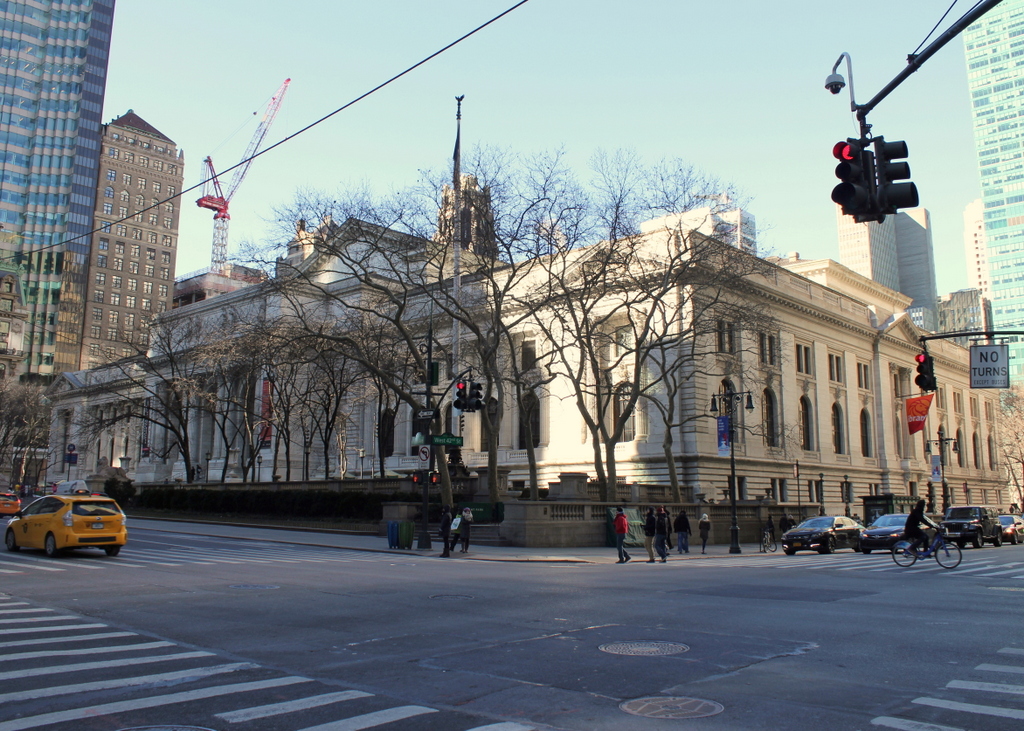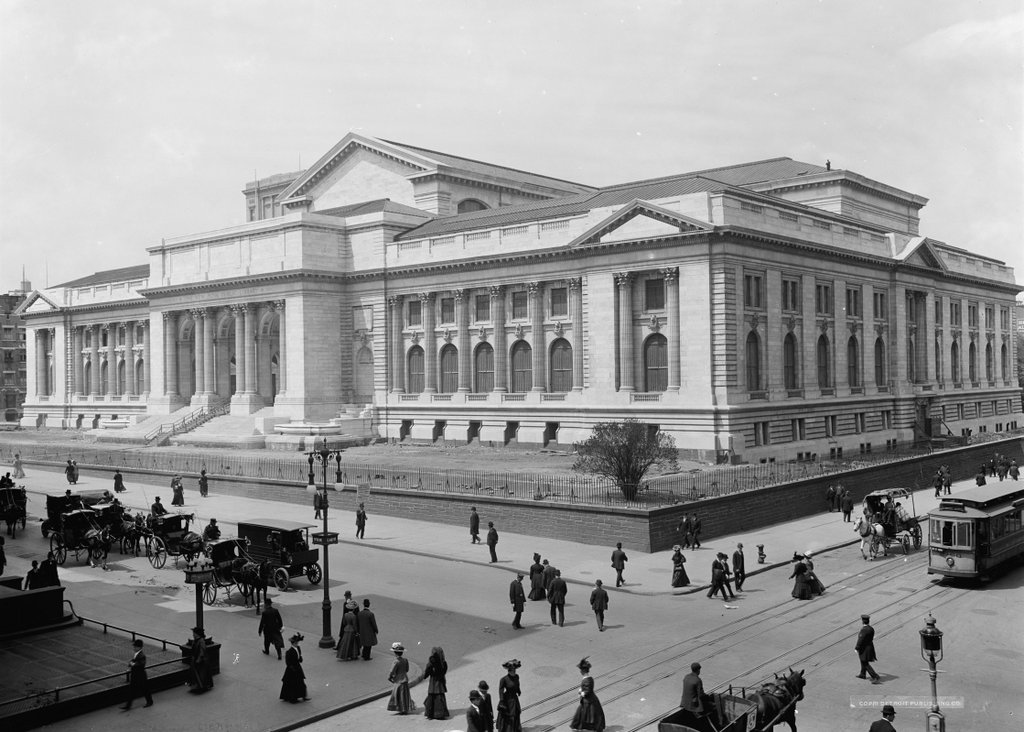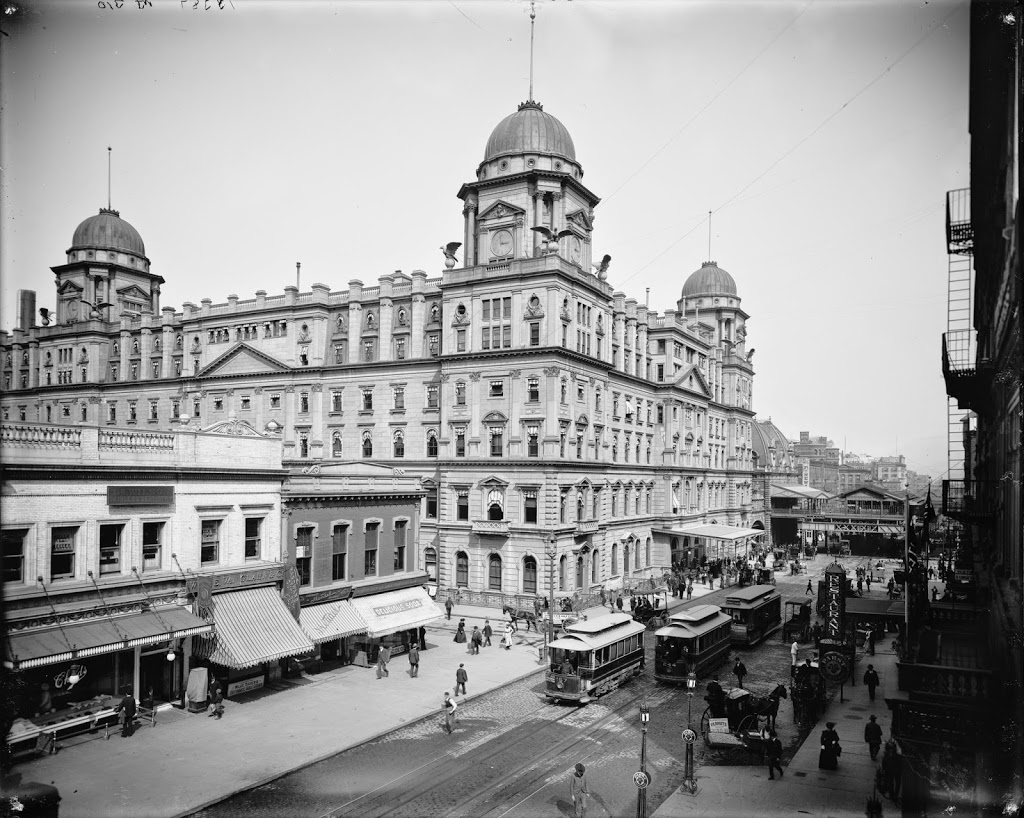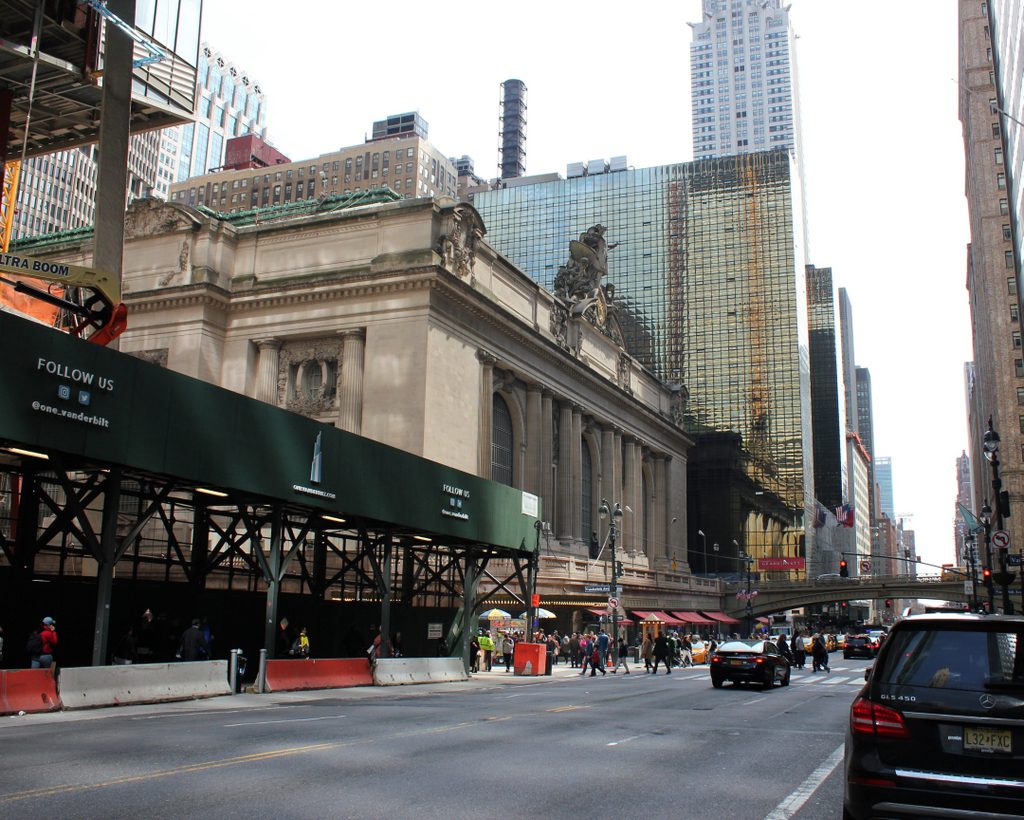The New York Public Library, seen from the corner of Fifth Avenue and 42nd Street around 1908. Image courtesy of the Library of Congress, Detroit Publishing Company Collection.
The view in 2016:

The first photo here was taken a few years before the one in this earlier post, and it shows the library shortly before its completion. At this point the building had been under construction for about six years, and although the exterior was mostly finished, there was still about three more years of work left to do. The grounds had not been landscaped yet, and instead the library was surrounded by dirt and debris, with a simple brick wall and metal picket fence around the construction site. Also missing from the first photo were the two lion statues that now flank the front steps. Originally nicknamed Leo Astor and Leo Lenox after two of the library’s greatest benefactors, they were designed by sculptor Edward Clark Potter and were installed by the time the library opened in 1911.




